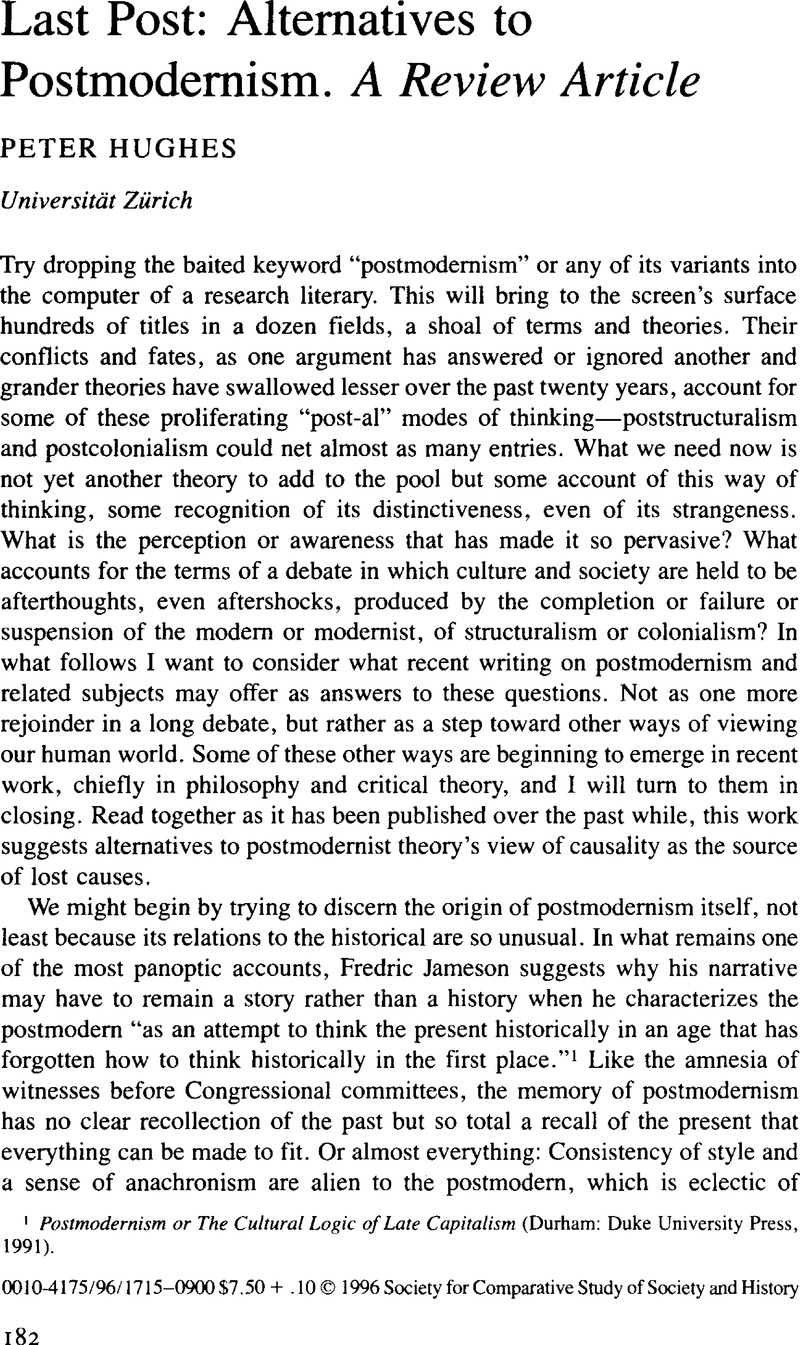No CrossRef data available.
Article contents
Last Post: Alternative to Postmodernism. A Review Article
Published online by Cambridge University Press: 03 June 2009
Abstract

- Type
- CSSH Discussion
- Information
- Copyright
- Copyright © Society for the Comparative Study of Society and History 1996
References
1 Postmodernism or The Cultural Logic of Late Capitalism (Durham: Duke University Press, 1991Google ScholarPubMed).
2 See Lyotard, Jean-François, The Postmodernist Condition: A Report on Knowledge (Minneapolis: University of Minnesota Press, 1984Google Scholar), and Hutcheon, Linda, A Poetics of Postmodernism: History, Theory, Fiction (New York: Routledge, 1988CrossRefGoogle Scholar).
3 The American Replacement of Nature: Economic Investments and Cultural Escapes (New York: Doubleday, 1991Google Scholar).
4 History and Tropology: The Rise and Fall of Metaphor (Berkeley and London: University of California Press, 1994), p. 182Google Scholar and note. Ankersmit refers in turn to the fundamental study by Jencks, Christopher, Postmodernism: The New Classicism in Art and Architecture (London, 1987Google Scholar).
5 Hays, K. Michael, Modernism and the Postmodernist Subject (Cambridge Mass, and London: MIT Press, 1992Google Scholar).
6 (London and New York: Routledge, 1992).
7 (Carbondale: Southern Illinois University Press, 1994).
8 The title and thesis of Wihl's, Richard C.The Contingency of Theory (New Haven, CT: Yale University Press, 1994Google Scholar).
9 See Ankersmit's discussion in History and Tropology, especially 166–9.
10 On Deconstruction: Theory and Criticism after Structuralism (Ithaca: Cornell University Press, 1982), 86–88Google Scholar.
11 “Die Psychologic wenn sie vom Schein spricht, verbindet Schein mit Sein. Wir aber können vom Schein allein sprechen, oder wir verbinden Schein und Schein,” Anscombe, G. E. M., ed. (Oxford: Clarendon Press, n.d.), 232Google Scholar. For a fuller account of Wittgenstein's position, see my “Performing Theory: Wittgenstein and the Trouble with Shakespeare,” Comparative Criticism, 14:71–86.
12 “Historiography and Postmodernism: Reconsiderations,” History and Theory, 29:3, 266.
13 (New York and London: Routledge, 1993), 98.
14 “Questions of Multiculturalism,” in The Post-Colonial Critic: Interviews, Strategies, Dialogues, Harasym, Sara, ed. (New York, 1990), 66Google Scholar.
15 Both published by the Harvard University Press.
16 (Cambridge: Harvard University Press, 1993).




